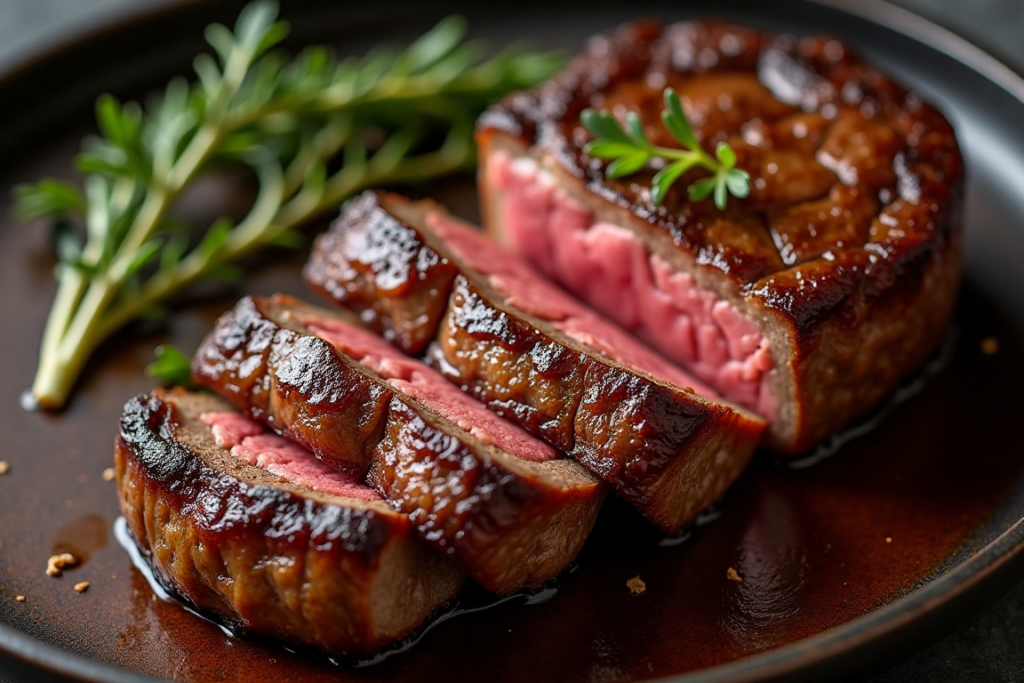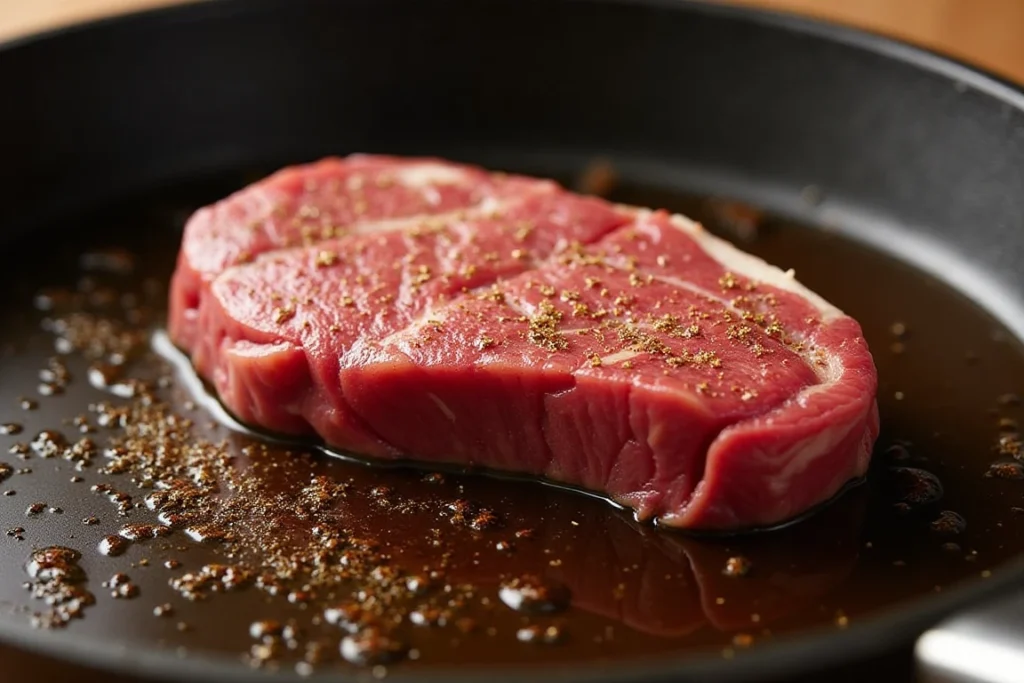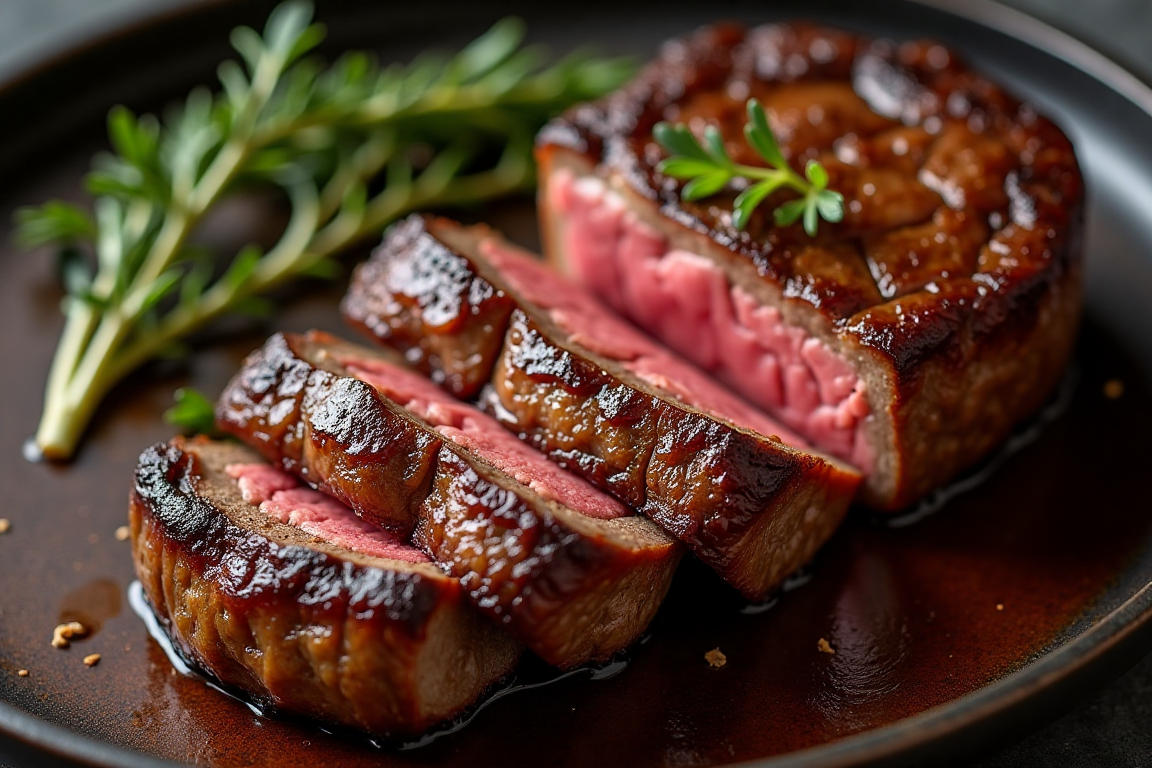
Ultimate Guide to Delmonico Steak: History, Recipe, and Tips
Delmonico Steak—just the name alone conjures up thoughts of elegance, sophistication, and the mouthwatering aroma of a perfectly cooked steak. If you’ve never had the pleasure of trying this iconic dish, you might be wondering: What makes a Delmonico steak so special?
In this comprehensive guide, we’ll dive deep into everything you need to know about Delmonico steak, from its rich history to how to cook it to perfection. Along the way, we’ll share mouthwatering recipes, essential cooking tips, and even discuss the best side dishes and wine pairings that complement this luxurious cut of meat. So let’s get started and discover why Delmonico steak should be your next dinner choice!
Table of Contents
What is a Delmonico Steak?
At its core, a Delmonico steak is a thick, juicy cut of beef that’s widely known for its tenderness and flavor. But what exactly is a Delmonico steak, and why is it different from other steak cuts like ribeye or strip steak?
Historically, the Delmonico steak was first popularized by Delmonico’s restaurant in New York City in the 19th century. While there’s some debate over the exact cut of meat that the restaurant used, most people associate the Delmonico steak with a thick-cut, boneless ribeye or sometimes a strip steak. Essentially, it’s a high-quality, well-marbled steak that has earned its place as a classic favorite among steak lovers.
The Origins of Delmonico Steak
The name “Delmonico” traces back to the famous Delmonico’s restaurant, which opened in New York City in 1837. This establishment was known for its upscale clientele and gourmet dishes, but perhaps most notably, for its creation of the Delmonico steak. It’s believed that the restaurant’s chef, Charles Ranhofer, was the one to perfect the steak, which became an instant hit. While there’s some ambiguity about which exact cut of beef was used, the Delmonico steak is now synonymous with high-quality beef cuts, often ribeye or strip steak.
Understanding Delmonico Cuts: Ribeye or Strip Steak?
When it comes to the actual cut, the term “Delmonico steak” is often used to refer to either a ribeye or a strip steak. But what’s the difference between the two, and which one is the best option for your Delmonico steak recipe?
- Ribeye: Known for its rich marbling, ribeye is tender, juicy, and packed with flavor. This cut has a high fat content, which makes it perfect for grilling or pan-searing.
- Strip Steak: Often leaner than ribeye, strip steak is a bit firmer but still tender and flavorful. It has a slightly more beefy taste and works great when grilled or broiled.
Ultimately, the choice between ribeye and strip steak depends on your personal preference for fat content and tenderness. Both cuts make excellent Delmonico steaks, so choose whichever you find most appealing.

How to Cook the Perfect Delmonico Steak
How to Cook the Perfect Delmonico Steak: Step-by-Step
Cooking the perfect Delmonico steak isn’t as difficult as it might sound, but it does require a little know-how to achieve that perfect sear and tender interior. Whether you prefer grilling, pan-searing, or broiling, we’ve got you covered with a foolproof step-by-step guide.
Preparing Your Delmonico Steak for Cooking
Before you even think about cooking, it’s important to prepare your steak correctly. Here are the key steps:
- Bring it to Room Temperature: Take your steak out of the fridge at least 30 minutes before cooking to allow it to come to room temperature. This ensures even cooking throughout the steak.
- Pat It Dry: Moisture is the enemy of a good sear. Use a paper towel to pat your steak dry to help achieve that perfect crust.
- Season Generously: Season both sides of the steak with salt and freshly ground black pepper. You can also use garlic powder, onion powder, or even a steak seasoning mix for extra flavor.
The Best Cooking Methods for Delmonico Steak
There are three main ways to cook a Delmonico steak: grilling, pan-searing, and broiling. Each method has its advantages, and we’ll walk you through each one so you can choose your favorite.
- Grilling: Preheat your grill to high heat. Place your steak on the grill and cook for about 4-5 minutes on each side, depending on your desired level of doneness.
- Pan-Searing: Heat a cast-iron skillet over medium-high heat and add a bit of oil. Sear the steak for 4-5 minutes on each side, then finish cooking in the oven at 400°F for 5-7 minutes for the perfect medium-rare.
- Broiling: Preheat your broiler and place the steak on a rack about 4 inches from the heat. Broil for about 4 minutes per side for medium-rare.
Perfecting the Searing Technique: Tips from the Pros
Searing is one of the most important steps in cooking a Delmonico steak. This process creates a delicious, caramelized crust while locking in the steak’s juices. To get the perfect sear, follow these pro tips:
- Use High Heat: Make sure your pan or grill is very hot before placing the steak on it. A hot surface ensures a great sear.
- Don’t Overcrowd the Pan: If you’re pan-searing, cook one steak at a time to avoid lowering the temperature of the pan.
- Let It Rest: After cooking, let your steak rest for 5-10 minutes. This allows the juices to redistribute, ensuring a juicy steak.
Common Mistakes When Cooking Delmonico Steak and How to Avoid Them
Common Mistakes When Cooking Delmonico Steak and How to Avoid Them
Cooking a Delmonico steak sounds straightforward, but even seasoned cooks can make a few missteps along the way. Avoid these common mistakes, and you’ll be on your way to steak perfection every time.
Overcooking Your Steak: Why It Happens and How to Prevent It
One of the most frequent mistakes people make when cooking Delmonico steak is overcooking it. A steak that’s been cooked past medium-rare (or even medium) can be tough, dry, and lacking in flavor. So how do you ensure your steak stays juicy and tender?
- Use a Meat Thermometer: This is the most reliable way to avoid overcooking. For a medium-rare Delmonico steak, aim for an internal temperature of 130°F to 135°F.
- Know Your Desired Doneness: Here’s a quick guide to steak doneness:
- Rare: 120°F to 125°F
- Medium-Rare: 130°F to 135°F
- Medium: 140°F to 145°F
- Medium-Well: 150°F to 155°F
- Well-Done: 160°F and above
- Rest the Steak: After cooking, always let the steak rest for about 5-10 minutes before slicing. This ensures the juices redistribute throughout the meat, keeping it moist and flavorful.
Not Letting the Meat Rest: The Key to a Juicy Steak
It’s tempting to dive into that perfectly seared Delmonico steak right off the grill or out of the pan, but patience is key. Letting your steak rest after cooking is one of the most important steps in ensuring a juicy and tender result.
Resting allows the juices inside the steak to redistribute. If you cut into the steak immediately, all the flavorful juices will run out, leaving you with a dry steak. Letting it rest for 5-10 minutes allows the juices to stay inside the meat, making every bite tender and full of flavor.

Popular Delmonico Steak Recipes You Need to Try
Popular Delmonico Steak Recipes You Need to Try
Now that you know how to cook a perfect Delmonico steak, it’s time to get creative in the kitchen! Here are some delicious recipes you can try that will elevate your steak experience to the next level.
Classic Delmonico Steak with Garlic Butter
This classic recipe features a perfectly seared Delmonico steak topped with rich, garlicky butter that melts into the meat, adding an extra layer of flavor. Here’s how to make it:
Ingredients:
- 2 Delmonico steaks (ribeye or strip)
- 4 tablespoons unsalted butter
- 3 cloves garlic, minced
- 1 tablespoon fresh thyme, chopped
- Salt and pepper to taste
Instructions:
- Season the steaks with salt and pepper. Heat a skillet over medium-high heat and add a bit of oil.
- Sear the steaks for about 4-5 minutes on each side or until they reach your desired doneness.
- In a separate pan, melt the butter over medium heat, then add the garlic and thyme. Stir for about 1-2 minutes until fragrant.
- Pour the garlic butter over the steaks and let them rest for 5-10 minutes before serving.
Grilled Delmonico Steak with Chimichurri Sauce
Chimichurri sauce is a zesty, herbaceous Argentinian sauce that pairs perfectly with the rich flavor of Delmonico steak. The tangy and fresh notes from the sauce cut through the richness of the steak, making it a mouthwatering combination.
Ingredients:
- 2 Delmonico steaks
- 1 cup fresh parsley
- 4 cloves garlic
- 1 tablespoon red wine vinegar
- 1/2 cup olive oil
- Salt and pepper to taste
Instructions:
- Preheat your grill to medium-high heat.
- Season the steaks with salt and pepper and grill them for 4-5 minutes per side, depending on your desired doneness.
- To make the chimichurri, blend the parsley, garlic, red wine vinegar, olive oil, salt, and pepper until smooth.
- Serve the grilled steaks topped with a generous spoonful of chimichurri sauce.
Slow-Cooked Delmonico Steak in Red Wine Sauce
For a luxurious, melt-in-your-mouth Delmonico steak, try slow-cooking it in a red wine sauce. The long, slow cook allows the flavors to develop and the meat to become incredibly tender.
Ingredients:
- 2 Delmonico steaks
- 1 cup red wine (choose a dry red wine like Cabernet Sauvignon)
- 1 cup beef broth
- 1 onion, sliced
- 3 sprigs fresh rosemary
- Salt and pepper to taste
Instructions:
- Season the steaks with salt and pepper. Heat a pan over medium-high heat and sear the steaks on both sides.
- Remove the steaks and set them aside. In the same pan, add the wine, beef broth, onion, and rosemary.
- Bring the mixture to a simmer and let it cook for 10 minutes. Then, return the steaks to the pan, cover, and let it cook on low heat for 1-2 hours.
- Once the steaks are tender, remove them and let them rest. Serve with the reduced red wine sauce.
Nutrition Facts and Health Benefits of Delmonico Steak
Nutrition Facts and Health Benefits of Delmonico Steak
Delmonico steak isn’t just delicious—it also packs a serious nutritional punch! Let’s take a closer look at the health benefits and the nutritional breakdown of this rich cut of beef.
Protein, Fat, and Calories in Delmonico Steak
Delmonico steak is a great source of protein, making it an excellent choice for those looking to build muscle or maintain a healthy diet. Here’s a general breakdown of the nutritional content for a 6-ounce serving of Delmonico steak (ribeye):
| Nutrient | Amount (per 6 oz) |
|---|---|
| Calories | 450 |
| Protein | 40g |
| Fat | 30g |
| Saturated Fat | 12g |
| Cholesterol | 110mg |
| Sodium | 75mg |
| Iron | 2.5mg |
Is Delmonico Steak a Healthy Choice?
While Delmonico steak is high in fat, it’s also a good source of protein, iron, and other essential nutrients. As with any red meat, moderation is key. If you’re eating a balanced diet, enjoying a Delmonico steak every once in a while can be part of a healthy lifestyle. Just be mindful of the portion size and balance it with plenty of vegetables or other healthy sides.
The Best Pairings for Delmonico Steak
The Best Pairings for Delmonico Steak: Side Dishes and Wine
To take your Delmonico steak experience to the next level, pair it with the perfect sides and wines. Here are some suggestions:
Ideal Sides: Potatoes, Vegetables, and More
- Roasted Garlic Mashed Potatoes: Creamy mashed potatoes with roasted garlic provide a rich, savory side that complements the beef.
- Grilled Asparagus: The slight bitterness of grilled asparagus balances out the richness of the steak.
- Creamed Spinach: A classic steakhouse side, creamed spinach adds a creamy, decadent texture to your meal.
Wine Pairing: Red Wines That Complement Delmonico Steak
- Cabernet Sauvignon: A full-bodied red wine with bold tannins and dark fruit flavors that perfectly complement the rich flavor of Delmonico steak.
- Malbec: With its fruity and spicy notes, Malbec is another excellent choice to pair with a hearty steak.
Conclusion: Why Delmonico Steak Should Be Your Next Dinner Choice
Whether you’re a steak connoisseur or a beginner, Delmonico steak offers a flavorful, tender, and luxurious eating experience. With a rich history, numerous cooking methods, and endless recipe possibilities, it’s no wonder this steak remains a favorite for so many.
So why not treat yourself to a delicious Delmonico steak next time you’re looking for a satisfying and indulgent meal? After all, life’s too short to skip the steak!


2 thoughts on “Cook the Best Delmonico Steak in 4 Simple Steps”